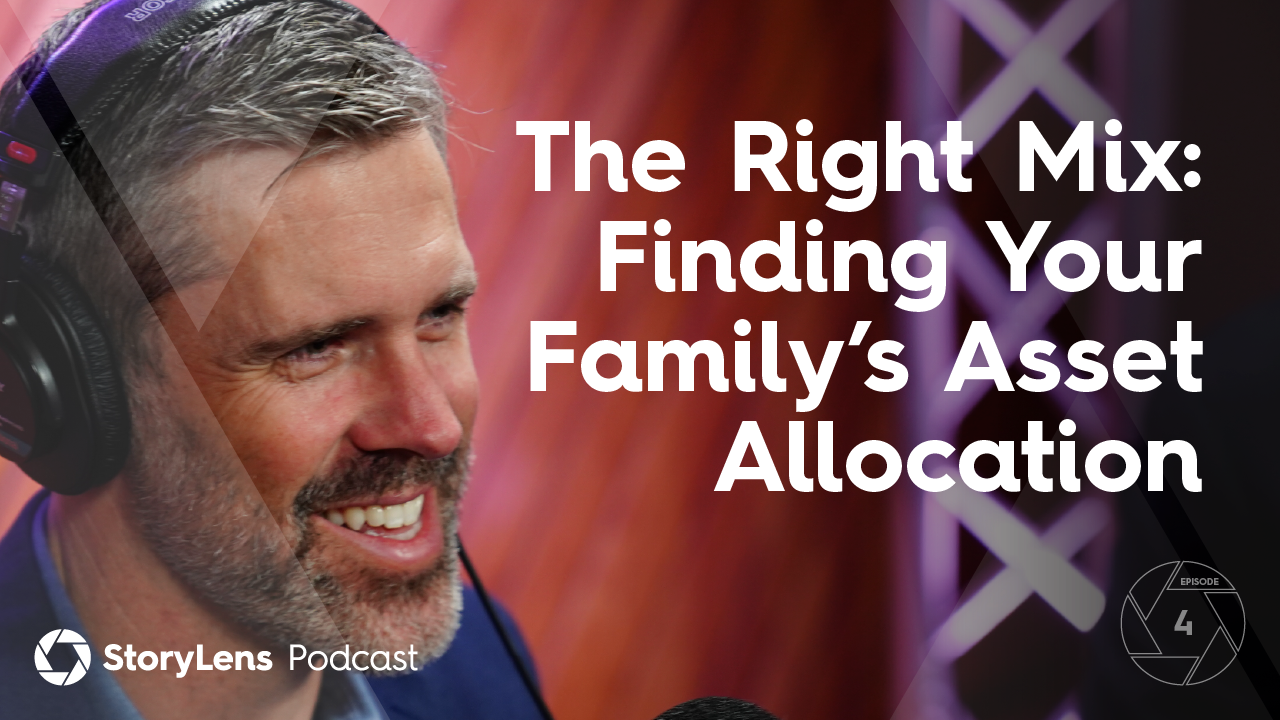
09 Oct The Right Mix: Finding Your Family’s Asset Allocation
Wealth management is not only about maximizing returns. It is about creating a balance sheet that reflects your story, values, and legacy. In Episode 4 of the StoryLens Podcast, the StoryOne partners John Christensen, Cameron Bond, and Kenny Conklin explore how families can wisely approach asset allocation across public markets, private equity, real estate, and venture capital.
Below are the key themes and questions families often ask.
What is asset allocation and why does it matter?
Asset allocation is the process of spreading wealth across different asset classes such as stocks, bonds, real estate, private equity, or venture capital in order to manage risk and return. For families of significant wealth, allocation is not just a financial exercise. It ensures that the family’s resources serve their long-term purpose, values, and legacy.
As Cameron Bond explains, “It is much less about chasing large returns. It is about making sure we do not make dumb decisions.” Allocation protects against short-term mistakes while keeping families positioned for long-term growth.
Why is liquidity so important for families?
Liquidity, the ability to access cash quickly without major losses, is one of the most overlooked aspects of wealth. As John Christensen puts it: “A lot of times you do not know what liquidity is until you do not have it and you need it.”
Without liquidity, families may find themselves unable to fund opportunities, cover tax obligations, or support philanthropic commitments. Maintaining a healthy level of liquidity ensures flexibility, stability, and peace of mind.
How should families think about public markets versus private deals?
Public markets (stocks and bonds) are often perceived as less exciting compared to private equity or venture deals. But the StoryOne team cautions against underestimating them.
“Public markets may not be exciting, but right now we are more optimistic about them than private deals,” notes Cameron Bond.
Public markets offer transparency, liquidity, and diversification. Private equity and venture capital, while potentially higher returning, carry greater risks, long time horizons, and often illiquidity. A thoughtful allocation balances both.
What about speculative investments?
Families often ask if they should “swing for the fences” with high-risk ventures. The StoryOne partners offer a clear perspective: speculative bets must be carefully framed within a stewardship mindset.
“If a family decides to make a speculative investment and it goes to zero, that is money that is not going to charity,” explains John Christensen.
In other words, speculative investments are not just about financial loss. They can represent a missed opportunity for impact. Families should treat them as discretionary, not foundational.
How does StoryOne frame the allocation conversation?
The StoryOne approach simplifies allocation into three buckets:
- Giving: Capital directed toward generosity and philanthropy
- Living: Resources needed for lifestyle, security, and flexibility
- Growth: Long-term investments designed to expand wealth for future generations
This framework helps families align allocation with values, ensuring the balance sheet supports both current needs and future legacy.
What is the ultimate goal of asset allocation for families?
At StoryOne, asset allocation is not about chasing returns or predicting markets. It is about aligning financial capital with a family’s story, stewardship, and purpose.
The right mix creates resilience, allows for meaningful generosity, and equips future generations with a balance sheet that reflects the family’s identity and vision.
As the StoryOne team puts it, “Steady Eddie wins.” Slow, thoughtful, and values-driven allocation will outlast speculative swings.
Key Takeaways
-
- Asset allocation is about stewardship, not speculation
- Liquidity is essential for flexibility and peace of mind
- Public markets provide stability, while private equity and venture add complexity and risk
- Every speculative investment has an opportunity cost
- A three-bucket framework (giving, living, growth) keeps families aligned with values
Stay Connected
Stay connected with the StoryLens Podcast for future conversations. Your story is anything but ordinary—and that’s exactly where we begin.
